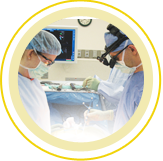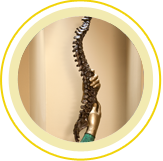Commitment to Technology
O-Arm Technology
Only spine surgeons in the Triad region using the O-Arm imaging system
Our surgeons are leaders in spine surgery and have undergone extensive training in the latest minimally invasive techniques. They are the only spine surgeons locally using the O-Arm, a state-of-the-art imaging system that creates detailed 2 and 3 dimensional images to help surgeons visualize the patient’s spine and their instruments throughout surgery. The O-Arm is a valuable tool in almost any type of spine surgery, from the most simple to the most complex.
What is the O-Arm?
The O-Arm is a portable, state-of-the-art imaging system that creates detailed 2- and 3-dimensional images to help surgeons in visualizing the patient’s spine. Before surgery, we place the C-shaped arm of the device over the operating table to take traditional x-rays. During surgery, the O-Arm functions like a CT scanner, providing real-time, 3-D images that the surgeon can use to make precise placements of instruments and implants.
How does this help?
The O-Arm imaging system enables us to see the patient’s spine exactly as it is at that moment in time, and we can see intra-operatively in real time exactly where instruments, implants and hardware have been placed – a critical factor for successful surgery. If we need to take additional images, we can do so without moving the patient. At the end of the procedure, we can also verify proper positioning of hardware and the spine by taking another scan. If adjustments are needed, we can make them before the patient leaves the operating room.
What types of surgeries can be done using the O-Arm?
The O-Arm is a valuable tool in most types of spine surgery, from simple to complex procedures. Ask your doctor whether it is appropriate for your particular case.
Benefits
- Technologically advanced, GPS like system for navigation of the spine
- Less time in surgery
- Allows surgeon to see the spine and instruments intra-operatively in real time
- Requires fewer and smaller incisions than traditional surgery
- Preserves healthy tissue during surgery
- Allows more precise placement of implants for improved results and increased safety
- Minimizes complications, pain, recovery time and the need for repeat surgeries



